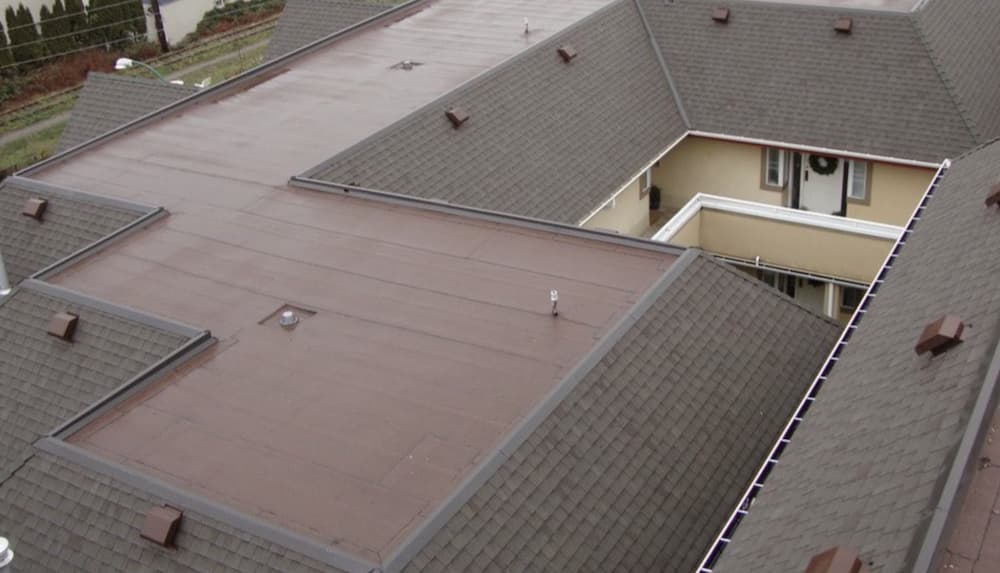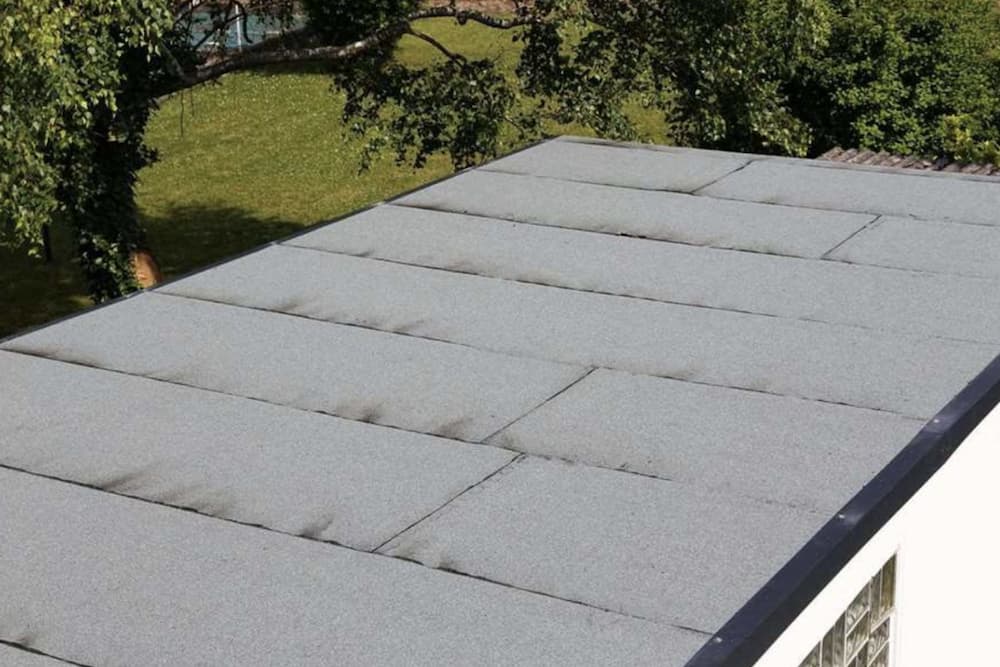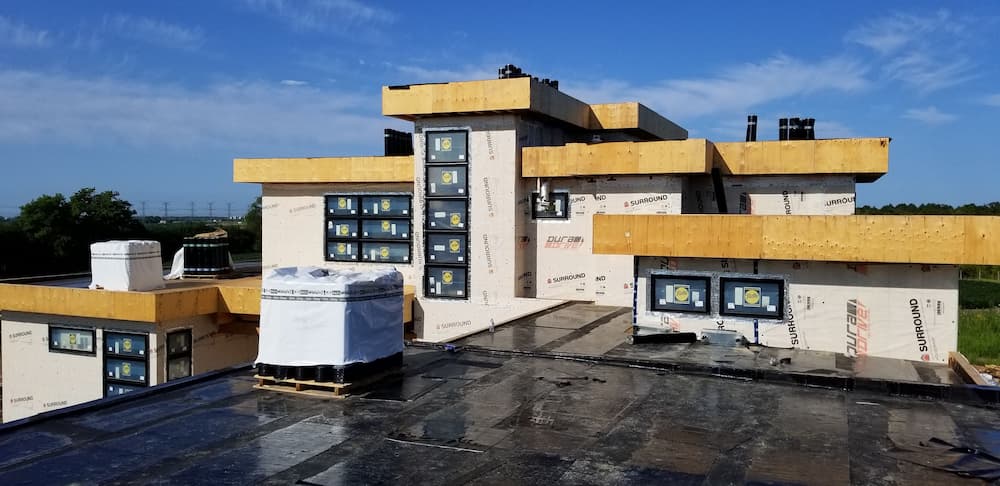Flat Roof Maintenance Checklist for Durham Homes
Flat roof maintenance is often overlooked, but keeping your roof in good condition is crucial. Quality flat roofing materials like TPO membrane, ceramic tile, and EPDM rubber can last up to 50 years with the proper maintenance. But if maintenance is ignored, your roof will last half or less. Numerous factors cause flat roofs to deteriorate, including natural calamities such as storms, earthquakes, fire, and hail, as well as traffic, aging, volcanoes, and even the sun. To protect your roofing investment follow your flat roof maintenance checklist and get the most out of your roof for years to come.
Unlike other roofing designs, homeowners often ignore flat roofs. This is primarily because people think that flat roofs require more maintenance than pitched roofs. This is absolutely true! Flat roofs require just as much, if not more, maintenance than pitched roofs, hence the diligence to a flat roof maintenance checklist by our Durham Region roofers.

When should you inspect your roof?
The best way to maintain a flat roof is to have it inspected by a professional flat roofing contractor at least once a year. Many owners do not find out their roof is defective until it fails. The key to prevention is regular inspection and maintenance. Professional roofing specialists usually have a flat roof maintenance checklist to assist in identifying problems.
The best time to inspect your roof is in the spring after the winter weather has passed. However, it would be best to have your roof inspected after any severe weather event, such as a hailstorm, tornado, or hurricane.
What should you look for during an inspection?
During an inspection, your roofer will look for any signs of damage, wear or tear. They will also check to ensure that all the roof components are in good working order. The key areas to inspect are the drains, gutters, downspouts, and flashings. Your roofer will also check the condition of your roofing materials. If any materials are damaged, they will need to be replaced.
Here’s a quick checklist of flat roof maintenance tasks
1. Surface degradation
Surface degradation is one of the most common problems with flat roofs. The roof’s surface is constantly exposed to the elements, which can cause it to deteriorate over time. Signs of surface degradation include:
- cracks
- blisters
- splits
- holes
These must be repaired as soon as possible to prevent further damage. You can use different repair methods depending on the type of roofing material. For example, asphalt shingles can be patched or replaced, while EPDM rubber roofing needs to be welded.
2. Leaks
The main issue our flat roof specialists from Whitby look for when inspecting a roof is leakage. Water accumulates in pools on top of the roof and puts pressure on the roofing membrane, causing it to crack. This is considered one of the most common flat roof problems. The best way to prevent leaks is by avoiding runoff and maintaining the strength of your roofing material. Leaking is caused by several factors, including:
- Poorly installed or damaged flashing
- Clogged drains
- Cracks or holes in the roofing material
- Improperly sealed seams
- Poorly installed or damaged roofing membranes
- Debris on the roof
- Ice dams
3. Cracks
Extreme weather changes can cause your roof to contract and expand, which can lead to the formation of cracks. If they are not noticed early enough and repaired, these cracks can become more extensive and cause leaks. Cracks can also provide an entry point for pests and small animals. When inspecting your roof for cracks, pay special attention to the flashings around chimneys, vents, and skylights.
You can prevent further damage to your roof by repairing cracks as soon as possible. They can be filled with a bonding agent like urethane caulk or repaired with a cold-applied roofing sealant like asphalt shingle patches.
4. Ponding water
Ponding water is one of the main culprits behind flat roof leaks. It occurs when water collects in pools on top of the roof and doesn’t drain properly. This puts pressure on the roofing material, which can cause it to crack and leak.

During installation, ensuring the roof has proper drainage is key to avoiding ponding water. This includes installing drains, gutters, and downspouts. Your roofer will also ensure that the roof has a slight slope so water can drain properly. To prevent ponding water, ensure your roof drains are clear and debris-free. You should also check the gutters and downspouts to ensure they’re draining correctly.
5. Internal structural damage
The internal structure of your flat roof is just as important as the external surface. If there is any damage to the trusses, joists, or decking, it can lead to big problems. Not only will this affect the strength of your roof, but it can also cause leaks. When inspecting the internal structure of your roof, look for:
- Cracks or holes in the trusses
- Sagging joists
- Damaged or rotted decking
- Any other signs of damage
6. Moss and algae growth
Moss and algae can grow on any roof, but they are more common in humid climates. While they may not seem like a big deal, moss and algae can cause severe damage to your roof. They hold moisture against the surface of the roof, which can cause the material to deteriorate. They can also clog gutters and downspouts, leading to ponding water.
You can use a pressure washer or a special Moss & Algae Roof Cleaner to remove moss and algae. Once they’re removed, you can prevent them from returning by installing copper strips or installing a special roof coating.
7. Check for Blistering
Blistering is caused by trapped moisture beneath the surface of the roof. As the water heats up, it expands and causes the roofing material to bubble. While blistering doesn’t always lead to leaks, it can signal that your roof is not properly ventilated.
If you notice any blisters on your roof, puncture them and allow the trapped moisture to escape. You can then repair the punctures with a cold-applied roofing sealant. Ensure your roof is adequately ventilated to allow heat and moisture to escape to prevent blistering. Experts recommend installing a ridge vent or soffit vents to improve ventilation.
What are the Objectives?
The main objective of this checklist is to help you identify potential problems with your flat roof and take steps to prevent them. Regularly inspecting your roof and taking care of any issues can extend its lifespan and avoid costly repairs.
Other objectives include:
- Learning how to inspect your roof for common problems
- Identifying the signs of potential damage
- Taking steps to prevent moss, algae, and blistering
- Improving the ventilation of your roof to prevent future problems.
- Ensuring that your roof has proper drainage to avoid ponding water.
Final Thoughts
Whether you’re trying to figure out if your flat roof needs repairs or you’re just curious about what causes problems with flat roofs, conducting a visual inspection is the first step in determining what the issue might be. Several roofing issues can affect flat roofs. The good news is that it’s relatively easy to identify them. All you need to do is follow the steps in this checklist and take a closer look at your roof. If you do spot a problem, you can take action to prevent further damage. And, if you’re unsure about anything, don’t hesitate to contact a professional roofer for help.


